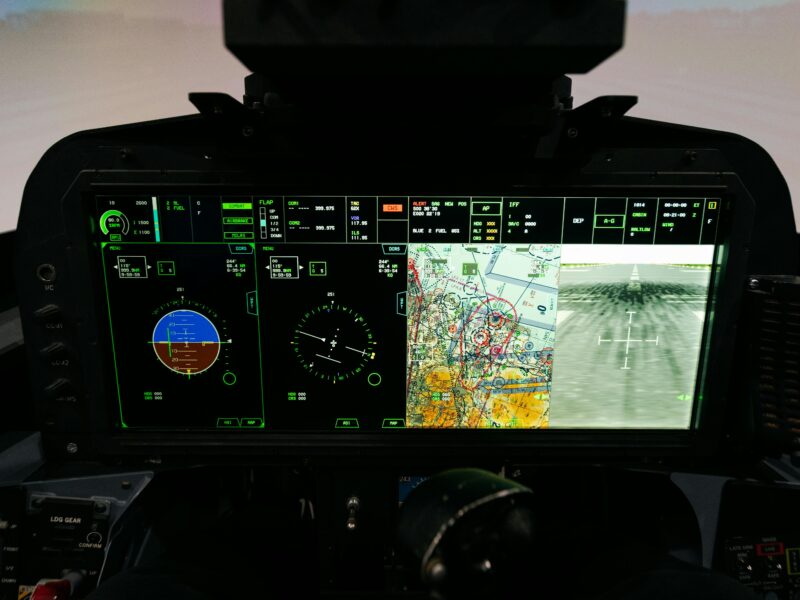If someone from a hundred years ago visited us today, they’d probably be amazed—not just by the smartphones in our pockets or electric cars gliding down the roads, but by the very infrastructure holding it all together. Skyscrapers that seem to pierce the clouds, highways that stretch endlessly, bridges that defy gravity, and even smart cities that “think” for themselves. This transformation isn’t just a product of necessity—it’s the result of tireless innovation.
Infrastructure is the backbone of any civilization. Roads, railways, water systems, and power grids silently support our daily lives. And now, thanks to the rapid evolution of technology, infrastructure itself is undergoing a revolution. Around the world, engineers, scientists, and visionaries are pushing boundaries, creating smarter, greener, and more resilient systems. This article explores how global innovation is reshaping infrastructure technology and what the future might look like.
The Digital Transformation of Infrastructure
Traditionally, infrastructure development has been slow, expensive, and manual. But in recent years, digital technologies have shaken things up.
One of the biggest game-changers has been Building Information Modeling (BIM). Think of BIM as a highly advanced, digital blueprint—but interactive. It allows architects, engineers, and contractors to collaborate on a single, 3D model of a project. They can simulate stress points, predict material needs, and even spot design errors before the first shovel hits the ground.
In Singapore, for example, BIM is required for many public projects. This proactive approach has helped reduce construction time, costs, and surprises. More than just saving money, it’s created safer, more sustainable buildings.
Then there’s the Internet of Things (IoT). With IoT, everyday infrastructure elements—bridges, pipelines, traffic lights—are embedded with sensors that collect and transmit data. This real-time feedback allows cities to monitor wear and tear, predict failures, and make informed decisions about maintenance.
Take Barcelona, Spain. The city has adopted IoT-based solutions for smart lighting, waste management, and traffic control. Streetlights dim when no one is around. Trash bins alert sanitation teams when they’re full. It’s efficient, environmentally friendly, and, well, pretty futuristic.
Sustainability: The New Foundation
Concrete and steel may have built the 20th century, but the 21st century demands more sustainable materials and methods. Climate change is no longer a distant threat; it’s here, and infrastructure must adapt.
Green construction is gaining traction globally. These are projects designed to minimize environmental impact from start to finish—using recycled materials, renewable energy, and eco-friendly practices. One standout is Norway’s Powerhouse Brattørkaia—a building that produces twice the energy it consumes. It captures solar energy, reuses rainwater, and was constructed with sustainability in mind at every turn.
Recycled plastic roads are another innovation making waves. In India and the Netherlands, engineers have found a way to turn discarded plastic into durable road material. Not only does this reduce landfill waste, but these roads are also stronger and last longer than traditional asphalt.
Meanwhile, countries like Denmark are pioneering offshore wind infrastructure. Their wind farms now generate a significant portion of the nation’s electricity, reducing reliance on fossil fuels. The key here isn’t just generating clean energy—but building the physical infrastructure to support it, from underwater cables to grid integration systems.
Resilience in the Face of Uncertainty
If there’s one thing the past decade has taught us, it’s that we must be prepared for the unexpected—be it a pandemic, a natural disaster, or supply chain disruption.
Resilient infrastructure is built to withstand shocks and bounce back quickly. Japan, which frequently faces earthquakes, has mastered this art. Its buildings are equipped with base isolation systems—essentially large shock absorbers that allow structures to sway safely during tremors. The results speak for themselves: lives saved and damage minimized.
In the U.S., after the devastation of Hurricane Katrina, New Orleans invested heavily in flood-resilient infrastructure—from advanced levees and pumps to green wetlands that naturally absorb floodwaters. These innovations don’t just protect cities; they protect futures.
Similarly, Africa is making strides in climate-resilient infrastructure. In Ethiopia, the government is investing in irrigation systems that can withstand droughts, helping farmers maintain productivity even during dry spells. It’s a simple yet powerful way to build both physical and economic resilience.
The Rise of Smart Cities – Global Innovation
What if your city could think, learn, and respond in real-time? That’s the promise of smart cities—urban areas powered by technology to improve quality of life.
In South Korea, Songdo was built from scratch as a smart city. Every piece of infrastructure—from buildings to roads—is connected to a central network. Residents enjoy automated waste disposal, real-time traffic updates, and energy-efficient living spaces.
Meanwhile, in Toronto, the now-discontinued Sidewalk Labs project offered a glimpse into what a data-driven neighborhood might look like—featuring modular buildings, heated sidewalks, and dynamic street usage based on demand.
Of course, smart cities also raise important questions around data privacy and equity. Who owns the data? Who benefits? These are critical conversations as we move toward more digitized living.
Mega Projects Pushing the Limits – Global Innovation
Around the globe, mega infrastructure projects are redefining what’s possible.
The Hong Kong-Zhuhai-Macau Bridge is one such marvel. Spanning 55 kilometers over the sea, it connects three major cities and took over a decade to complete. It includes tunnels, artificial islands, and futuristic design—all made possible by cutting-edge engineering.
In the Middle East, NEOM in Saudi Arabia is aiming even higher. It’s a $500 billion project to build a city from scratch, powered entirely by renewable energy, featuring flying taxis, AI-driven services, and zero emissions. It’s ambitious, yes—but it represents a bold vision for infrastructure in the age of innovation.
China’s high-speed rail network is another story of innovation at scale. With over 40,000 km of track, it’s the largest in the world and a model of speed, efficiency, and integration. It’s not just about moving people—it’s about connecting economies and accelerating growth.
Challenges on the Road Ahead – Global Innovation
Despite the progress, innovation in infrastructure isn’t without its hurdles.
Funding remains a major obstacle. Big ideas need big budgets, and not every government can afford the price tag. Public-private partnerships are helping fill the gap, but there’s still a long way to go in making innovation more accessible.
Regulatory roadblocks can also slow things down. Innovation often outpaces legislation, leading to grey areas around safety, data, and environmental impact. Governments must adapt quickly to keep pace with changing technologies.
Then there’s the human factor. Change can be hard, especially when it disrupts jobs, communities, or ways of life. Successful infrastructure innovation requires not just great engineering—but also thoughtful planning, inclusivity, and public engagement.
The Human Side of Innovation
Behind every bridge, building, and smart grid are people—visionaries, workers, communities. Infrastructure isn’t just steel and stone; it’s a reflection of our hopes, priorities, and dreams.
Consider the Detroit Greenway Project—a grassroots effort to convert old rail lines into pedestrian paths and green spaces. It’s not high-tech or flashy, but it’s transforming lives by promoting health, mobility, and connection.
Or the Solar Mamas in rural India—women trained to install solar panels in off-grid villages. Their work brings electricity—and empowerment—to communities once left in the dark.
These stories remind us that innovation is most powerful when it’s inclusive, when it uplifts and empowers.
Looking Forward
So, where do we go from here?
The future of infrastructure is interdisciplinary—blending engineering, environmental science, data analytics, and social equity. It’s global—with ideas flowing from Tokyo to Nairobi to São Paulo. And most importantly, it’s human-centric—designed not just to impress, but to improve lives.
As we pave the roads of tomorrow—both literally and metaphorically—we must continue to ask: How can infrastructure serve people better? How can it protect the planet? How can it build a more connected, just, and resilient world?
Global innovation in infrastructure technology isn’t just about what’s next. It’s about what’s possible—and who we become as we build it.



